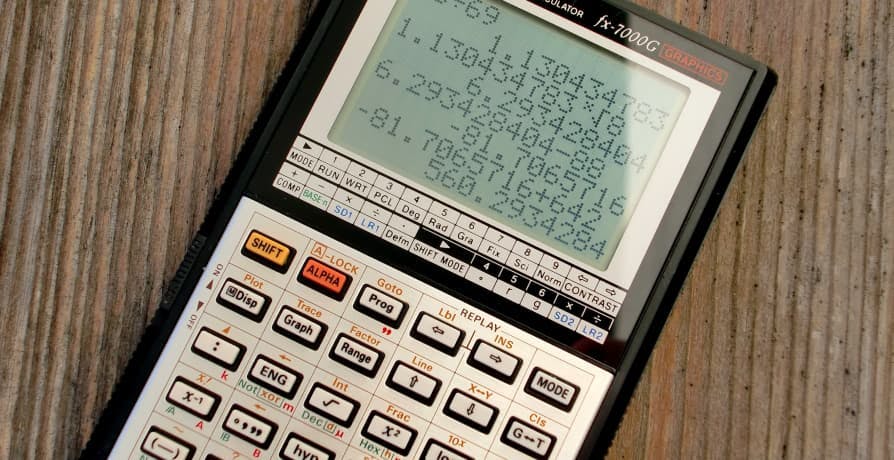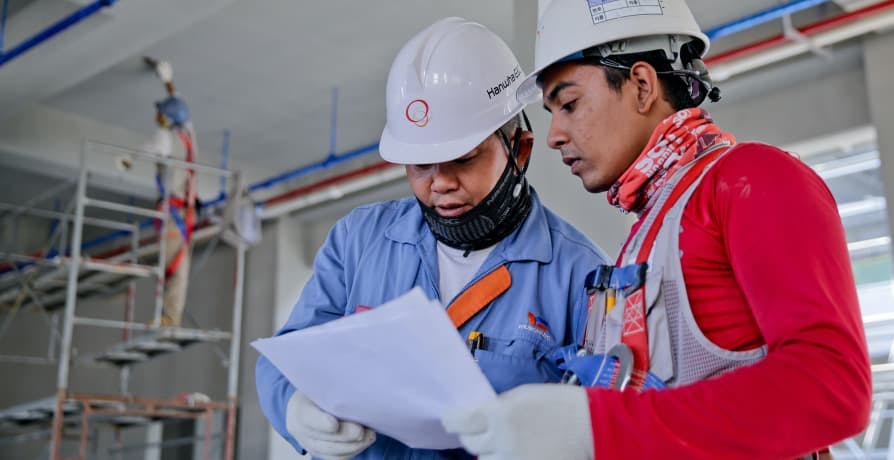
What are the 3 Pillars of Corporate Sustainability?
In this article, we'll explore what the 3 pillars of corporate responsibility are, why they're important, and how businesses can turn them into practical action.
ESG / CSR
Industries



If you’re into carbon accounting, odds are – you already know a lot about scope emissions, but emissions categories may be a new one for you if you have yet to read about the new proposal by ADEME to improve the precision of carbon assessments.
What are the new emissions categories presented by ADEME, and how would they help to make carbon assessments more accurate?
Carbon accounting platforms often make use of emissions categories or scope emissions in order to calculate the carbon footprint of a company, and how precise that measurement is will ultimately allow for a better understanding on how to reduce those emissions most effectively.
If the Greenhouse Gas Protocol is to move forward with ADEME’s proposal, emissions categories would replace the current functionality of scope emissions.
Before the release of this proposal by ADEME, greenhouse gas emissions were assessed through the use of scope emissions – or three previous categories of emissions that broke down the entities in which excessive emissions were being produced.
Before emissions categories were proposed, carbon accounting platforms solely relied on scope emissions, or “categories” of different emissions in order to better understand where excessive emissions and carbon activity are coming from.
All scope emissions are all different from one another – but scope emissions 1, 2, and 3 are more collectively alike to one another in comparison to scope 4 emissions.
👉Ultimately, carbon accounting platforms make use of scope emissions to make the process of measuring a carbon footprint easier in order to encourage those to get started on their climate journey.
Scope emissions are broken down into 4 total categories:
Scope 1 emissions refers to emissions that are caused as a direct result of industrialization production or the vehicles used by a company. Scope 1 emissions also refers to any uses of non-renewable energy as well – like the emissions due to fuel combustion from company owned vehicles.
Scope 2 emissions are the emissions that are created by energy consumption – such as the electricity necessary to power an office building, or the air conditioning or central heating that runs in the office.
Scope 3 emissions refer to any emissions produced that don’t fall under scope emissions 1 or 2. Scope 3 emissions are infamously the most difficult emissions to measure, as they occur due to activities outside of the company itself: such as from business travel or how employees choose to get to work.
Scope 4 emissions, or avoided emissions, refer to the emissions that are reduced outside of a value chain or a product's life cycle. An example of scope 4 emissions are the emissions that are avoided from those who work remotely and avoid contributing to the energy costs necessary to power an office building. Reporting scope 4 emissions isn’t required in the way the scope 1, scope 2, and scope 3 emissions often are – but they can prove useful for companies seeking to improve upon their sustainability and achieve their emission reduction goals faster.
Scope emissions have been used by GHG, or the Greenhouse Gas Protocol, since the late 1990s – with scope 3 emissions being introduced in 2011 and scope 4 emissions more recently.
👉If the Greenhouse Gas Protocol is to apply this new methodology by ADEME, scope emissions would no longer serve as the most precise method of calculating carbon emissions.

The new proposal suggested by ADEME is meant to make carbon assessments more precise with emissions categories than they would be by using scope emissions.
👉 Remember, the three main scope emissions will become obsolete from the carbon footprint methodology used by ADEME – but the Greenhouse Gas Protocol has yet to decide to implement this new method of dividing carbon emissions and calculating a carbon assessment.
This new method of calculating carbon assessments and emissions categories is being released alongside the most recent report published by the IPCC, or the Intergovernmental Panel on Climate Change – which states that in order to successfully reduce global warming from 2°C to 1.5°C, the world has to cut its current rate of emissions in half by the time 2030 rolls around.
👉 Ultimately, the main goal of the new emissions categories proposed by ADEME is to help reduce emissions at a faster rate than it would be possible to do so with the traditional scope emissions – as climate change continues to grow out of hand. The proposal for emissions categories will seek to help companies reduce their emissions faster than previously intended in order to adhere to the advice provided by the IPCC.

The new emissions categories will seek to improve the process of organizing emissions, such as by seeking to align the practices of emissions categories with the ISO 14064 standard and returning to the original methodology developed by ADEME.
The emissions categories will be split into six different categories as opposed to original three scope emissions that were previously used.
The first category, previously referred to as scope 1, will refer to emissions directly created from stationary combustion sources, or from sources owned or controlled by the entity carrying out the GHG assessment – such as the use of fossil fuels. The first category of emissions categories will also include emissions from mobile combustion sources, such as from a car or a truck, from physical or chemical processing, fugitive emissions, biomass, and from industrial processes – such as when there is a leak somewhere on the grounds of the company. This category refers to direct greenhouse gas emissions, and is divided into five subcategories.
The second category will refer to the indirect emissions as a result of energy consumption, such as electricity usage, the power created by a nuclear powered plant, renewable energy sources, or other electrical operations. The two subcategories for this category are indirect emissions from electricity consumption, and indirect emissions from energy consumption.
The third category will refer to emissions created through transportation and include five subcategories: the upstream and downstream transportation of goods, employee commuting, visitor and client transport, and business travel.

The fourth category will refer to the emissions created from purchased products, in a similar fashion to the previously used scope 3 emissions category from the scope model – which are infamously the most difficult of the scope emissions to measure and reduce. This is because the fourth category of the new emissions categories will refer to the emissions created from raw materials and other miscellaneous supplies, which are often emissions out of jurisdiction for the company. Similar to scope 3 emissions, the new fourth category will also include the emissions created from leased assets, purchased services, the emissions created from waste management, and the environmental impact of a product or service after it has left the grounds of the company. The official four subcategories are: purchased goods, purchases services, capital goods, waste management, and upstreamed leases
The fifth category will specifically refer to the indirect emissions created from sold products, also in a similar manner to which scope 3 emissions were used in the previous carbon assessment model. Category five of the emissions categories will help to calculate the emissions created from products sold such as by determining the environmental impact of the amount of energy and materials used to create the product, referring to downstreamed leased assets, and the overall lifecycle of a product. The fifth category will also refer to the investments and financial activities of a company and the emissions they create. Ultimately, there will be four subcategories for category five: investments, downstreamed leased assets, end-of-life treatment for sold products, and the use of sold goods.
The sixth and final category of emissions will refer to the indirect emissions created by a company. Again, in a similar manner to how scope 3 emissions functioned – the last category in the new emissions categories will allot for all the emissions that are created due to the company, but aren’t able to perfectly fit into one of the five other emissions categories. There is only one subcategory for category six.
The Greenhouse Gas Protocol would benefit from adjusting their own scope emission models to the new emissions categories suggested by ADEME for several reasons. First off, the new emissions categories would account for all seven of the different types of greenhouse gasses: including carbon dioxide, methane, nitrous oxide, hydrofluorocarbons, perfluorocarbons, sulfur hexafluoride, and nitrogen trifluoride. The new methodology provided by ADEME will allow for six precise steps to help improve the measuring of a company’s carbon footprint – in a more meticulous and detailed manner than scope emissions will be able to. This is because the new emissions categories allow for more significant emission reductions given the framework for this type of carbon calculation is more specific than scope emissions are.
The new emissions categories could benefit the Greenhouse Gas Protocol as it will require for more precise data collection, and ultimately – a better understanding of the emissions produced, which allows for more effective ways to reduce emissions and help companies that seek the expertise of the Greenhouse Gas Protocol to adhere to their emission targets with success.
In fact, many companies are required to complete a greenhouse gas assessment: such as companies employing over 500 people in metropolitan areas, companies in regions and overseas departments with over 250 employees, municipalities with over 50,000 inhabitants, and other legal entities under public law that employ over 250 people. In other words, many people are required to complete greenhouse gas assessments – meaning that many companies could ultimately benefit from switching from the use of scope emissions to emissions categories to measure and reduce their emissions.

Despite the fact that these new emissions categories will be required as of 2023, the new emissions categories are being advertised as a transition plan. Therefore, it is imperative to keep in mind the human and financial resources necessary to transition to the use of emissions categories – as this new methodology is meant to serve as a long-term approach for carbon assessments. Companies are expected to monitor and adjust their targets accordingly from new understandings of their current emissions in accordance with the new emissions categories.
In addition to this, companies are expected to follow through with significant changes to drastically reduce their emissions as a result of implementing the use of the new emissions categories – or at least commit to making an attempt to lessen the amount of emissions produced from at least 80% of their indirect emissions. Entities that fail to do so will face a hefty penalty – anywhere from €1,500 to €10,000, and €20,000 for failing to comply a second time.
Environmental legislation is getting tougher in order to adjust accordingly with the times, but with climate change becoming as serious of a threat as is – new measures like the emissions categories proposed by ADEME could help the Greenhouse Gas Protocol enforce better emission measurement, understanding, and overall emission reductions across the world.
If reading this article about the new emissions categories in 2023 has made you interested in reducing your carbon emissions to further fight against climate change – Greenly can help you!
It can be hard to identify scope emissions and subsequently reduce them, but Greenly can help you take the concrete action necessary to properly determine where – click here to book a demo and get started with your climate journey today.
Greenly can help you make an environmental change for the better, starting with a carbon footprint assessment to know how much carbon emissions your company produces.